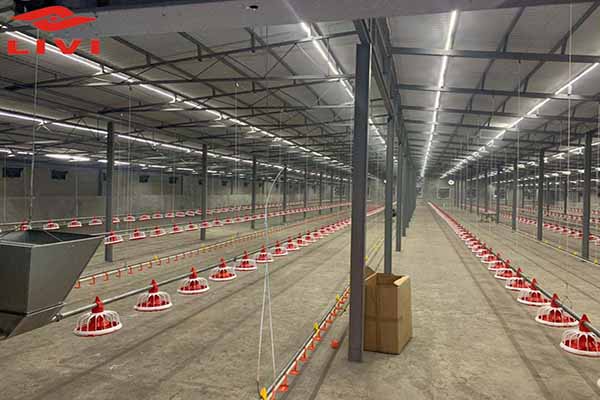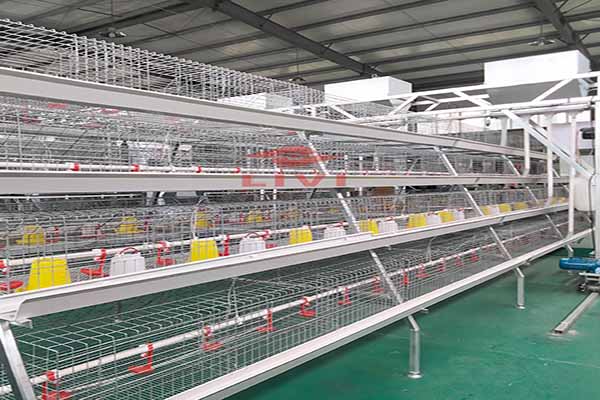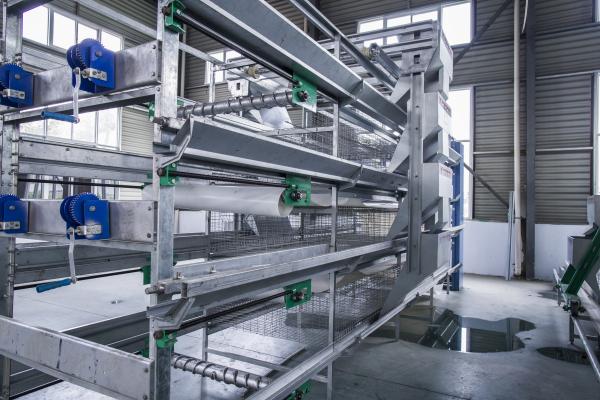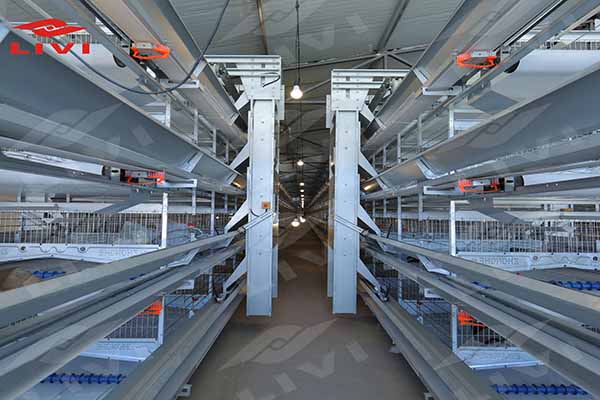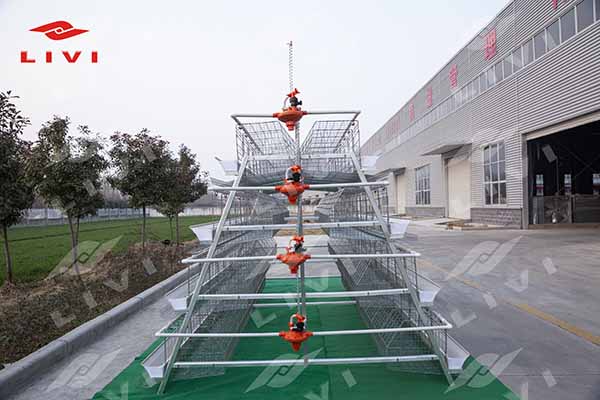Selecting the right layer battery cage system is one of the most important decisions a poultry farmer can make. A well-chosen system can improve egg production, reduce labor costs, and enhance overall farm efficiency. However, with so many types of poultry cages available, it can be difficult to decide which is best for your farm’s scale, climate, and management style.
In this comprehensive poultry cage buying guide, we’ll explain how to choose layer cages wisely, compare different systems, and help you understand why the LIVI cage system is trusted by poultry farmers worldwide. Whether you’re starting a new farm or upgrading an existing facility, these insights will help you make a confident, long-term investment.
I. Understanding Layer Battery Cage Systems
Before you choose the right layer cages, it’s essential to understand what a layer cage system is and how it functions.
A layer battery cage system is a structured setup designed to house laying hens in multiple tiers. Each cage row provides birds with feeding, drinking, and egg collection systems. Modern designs, like the LIVI layer cage system, focus on automation and hygiene, offering efficient manure removal, ventilation, and egg handling.
Main components of a layer cage system include:
- Cage frames and mesh: Provides durability and comfort for hens.
- Feeding and watering systems: Distribute feed and water evenly.
- Egg collection belts: Transport eggs gently to collection points.
- Manure removal systems: Keep the environment clean and odor-free.
Understanding these features will help you identify which cage system matches your farm’s operational needs.
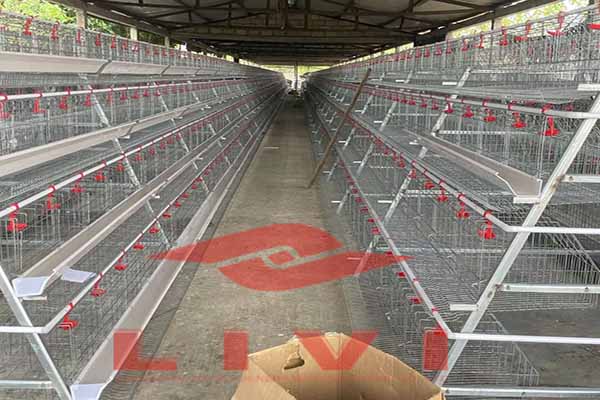
Choose the Right Layer Battery Cage System for Your Poultry Farm
II. Key Factors to Consider When Choosing a Poultry Cage System
When reading any poultry cage buying guide, you’ll notice that choosing the right system involves evaluating multiple aspects—capacity, design, durability, and budget. Below are the main factors to consider before making your purchase.
1. Farm Size and Production Goals
Your farm’s size and egg production targets will determine the most suitable layer battery cage system.
- Small to medium farms (5,000–10,000 birds): A semi-automatic cage system with manual egg collection may be sufficient.
- Large commercial farms (20,000+ birds): A fully automated LIVI layer farming cage system with feeding, egg, and manure conveyors is more efficient.
Define your short-term and long-term production goals before making an investment.
2. Cage Material and Build Quality
Durability is key. Choose cages made from hot-dip galvanized steel or galvanized wire mesh, which resists rust and corrosion even in humid environments.
Poor-quality materials can lead to frequent repairs, higher mortality rates, and lower productivity. LIVI cages, for instance, use anti-corrosion coatings that extend lifespan up to 15–20 years under proper maintenance.
3. Design and Bird Comfort
An often-overlooked aspect of choosing layer cages is bird welfare. Modern designs prioritize:
- Adequate space per bird.
- Smooth wire surfaces to prevent injuries.
- Proper ventilation and lighting integration.
Systems that balance density with comfort result in healthier birds and higher egg yields.
4. Feeding and Watering Systems
Efficient feeding and watering are crucial for consistent egg production. Automated systems ensure uniform feed distribution and constant access to fresh water.
Choose cages compatible with automatic nipple drinkers, feed troughs, and feed augers. LIVI systems are designed for flexibility, allowing farmers to scale or upgrade easily as production increases.
5. Waste Management and Hygiene
Cleanliness directly affects bird health and egg quality. The best poultry cage systems include belt-type manure removal that reduces odor, controls flies, and minimizes disease risks.
An integrated manure removal system saves time and reduces labor costs—an important factor when planning long-term farm efficiency.
III. Comparing Different Types of Layer Cage Systems
Before deciding, it’s wise to compare different layer cage systems to understand how they meet various operational needs.
1. Manual Layer Cage Systems
- Advantages: Low cost, simple to install, suitable for beginners.
- Disadvantages: Labor-intensive; higher risk of uneven feeding and egg breakage.
- Best for: Small-scale farms with limited automation needs.
2. Semi-Automatic Layer Cages
- Advantages: Combine manual feeding with automatic egg collection or manure belts.
- Disadvantages: Requires partial labor but offers greater efficiency than manual systems.
- Best for: Medium-sized farms transitioning to automation.
3. Fully Automatic Layer Cage Systems
- Advantages: Integrated control systems for feeding, drinking, egg collection, and cleaning.
- Disadvantages: Higher initial investment but lower long-term costs.
- Best for: Large commercial farms focusing on productivity and labor savings.
➡ Pro Tip: When comparing, consider total cost of ownership—not just purchase price. A durable, efficient system like the LIVI automated layer cage system pays for itself through reduced maintenance and higher production efficiency.

Choose the Right Layer Battery Cage System
IV. Benefits of the LIVI Cage System
The LIVI cage system has become a trusted choice for poultry farms worldwide due to its high-quality engineering and adaptability. Below are key advantages that make LIVI stand out:
1. Long-Lasting Durability
Made from hot-dip galvanized materials, LIVI cages resist rust and deformation, even in humid tropical climates. This guarantees long-term use with minimal corrosion or wire breakage.
2. Advanced Automation
LIVI provides full automation for feeding, watering, egg collection, and manure removal. These features reduce labor needs and ensure consistent performance across large-scale operations.
3. Optimal Space Utilization
The multi-tier cage design allows maximum use of poultry house space. You can house more layers in the same area without compromising bird comfort.
4. Enhanced Hygiene and Biosecurity
The system includes belt manure removal, which improves air quality and reduces ammonia levels—protecting both birds and workers. This feature is particularly valuable for farms aiming for high biosecurity standards.
5. Customization and Technical Support
Every farm has unique needs. LIVI offers custom cage layouts, design consultation, and technical training, ensuring farmers get the perfect setup for their local conditions and business model.
💡 Thinking about upgrading your poultry house? Contact LIVI’s technical team to get a customized layout plan and quotation tailored to your farm’s needs.
V. Step-by-Step Poultry Cage Buying Guide
When you’re ready to buy layer cage system, follow these steps to make a well-informed decision.
Step 1: Define Your Capacity and Layout
Decide how many birds you plan to raise per house. This determines the cage model and number of tiers required. LIVI experts can provide 2D or 3D layout drawings based on your available land.
Step 2: Compare Cage Models
Review different LIVI cage systems (A-type, H-type, or customized structures).
- A-type cages: Simpler design, suitable for small to medium farms.
- H-type cages: Fully automatic, high-density, ideal for large farms.
Step 3: Evaluate the Supplier
Choose a reliable manufacturer with proven experience. LIVI has decades of expertise and serves clients in over 80 countries, offering installation, maintenance, and after-sales support.
Step 4: Calculate Your Return on Investment (ROI)
A high-quality cage system may cost more upfront but saves money over time. Automation reduces feed waste, improves egg collection efficiency, and lowers labor costs—leading to a faster ROI.
Step 5: Plan for Maintenance
Ask about spare parts availability, warranty terms, and cleaning guidelines. Regular maintenance ensures long-lasting performance and sustained egg production.
👉 Need professional advice? LIVI offers free consultation and cage layout design to help you choose the right system before purchasing.
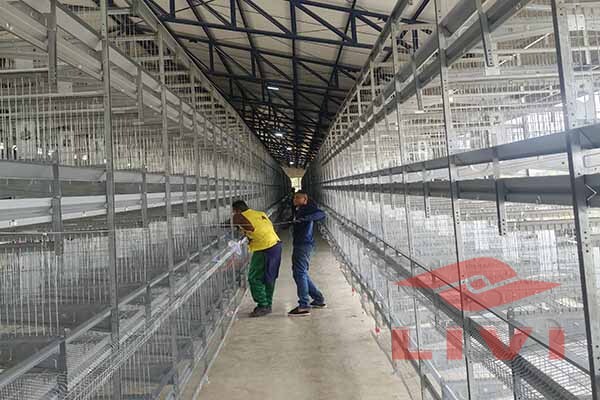
Poultry Farming Cages From Livi Machinery
VI. Common Mistakes to Avoid When Choosing Layer Cages
Even experienced farmers can make errors when selecting a poultry cage system. Avoid the following pitfalls:
- Ignoring ventilation requirements – Poor airflow leads to heat stress and reduced egg output.
- Buying based only on price – Cheap cages often corrode quickly and cost more in repairs.
- Overcrowding the cages – Excessive stocking density affects bird health and productivity.
- Neglecting after-sales service – Always choose a supplier with reliable support and spare parts.
By avoiding these mistakes, you can ensure that your cage system performs efficiently and lasts for many production cycles.
VII. Why Choose LIVI for Your Poultry Cage System
- Over 30 years of experience in poultry equipment manufacturing.
- Global installation services and on-site technical training.
- Custom solutions for layer, broiler, and breeder farms.
- Eco-friendly design with focus on energy savings and waste recycling.
LIVI’s integrated solutions help poultry farmers improve efficiency, reduce mortality rates, and achieve higher profit margins.
🐔 Ready to upgrade your poultry operation? Contact LIVI today to get a free project plan and professional quote!
VIII. Conclusion: Invest Smart, Farm Smarter
Choosing the right layer battery cage system is not just about equipment—it’s about building a foundation for sustainable success. By understanding system types, comparing features, and working with a reliable manufacturer like LIVI, you can create a poultry operation that is productive, efficient, and future-ready.
Whether you are looking for a manual setup for a small farm or a fully automated LIVI cage system for large-scale production, making an informed choice today will reward you with years of smooth operation and profitable returns.
💬 Get Expert Help: Visit LIVI’s official website or contact their sales team to receive a free consultation and customized poultry cage proposal.
Take the next step toward a smarter, more efficient poultry farm — powered by LIVI.






